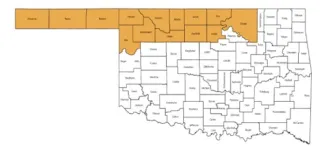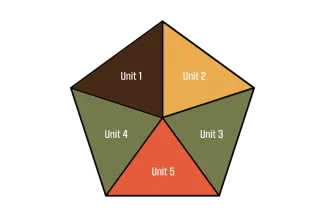While ring-necked pheasant or simply "pheasant" were first introduced into Oklahoma around 100 years ago, they remain a popular gamebird species for many outdoor enthusiasts whether hunting or simply wildlife viewing. Before we get too deep into land management, we first need to identify what areas of the state in which pheasant management may be beneficial. Alfalfa, Beaver, Cimarron, Garfield, Grant, Harper, Kay, Major, Noble, Texas, Woods, and Woodward counties as well as portions of Blaine, Dewey, Ellis, Kingfisher, and Logan counties north of US Highway 51 and western portions of Osage County are the areas where pheasant are most likely to persist here in Oklahoma. The map below highlights which counties are most suitable for pheasant.

Managing for pheasants in Oklahoma doesn’t have to be an overly arduous task, in many instances a few simple adjustments to existing practices can ensure that you are leaving space and resources "for the birds."
Is My Property Providing Everything Pheasant Need?
One thing to keep in mind is that pheasant are a Galliform or from the Order Galliformes. This group also contains quail and turkey, and managing for pheasant can provide benefits for those species as well.
Throughout a given year pheasant habitat can look different but, ultimately, we want to ensure that the resources they need are there when they need them. Food and water resources as well as nesting, brood rearing, and wintering cover are critical for ensuring pheasant stick around. A mix of all in close proximity is best and an “ideal” landscape may include fields of tall native grasses and flowering plants, croplands offering cover and waste grain, dense woody or herbaceous thickets, and “weedy” fields or patches rich with bare ground and a dense overhead canopy of herbaceous cover.
A Five-Year Cycle
A good rule of thumb for land management in Oklahoma is a four-year cycle of prescribed fire or a burn rotation. However, adding a fifth year can be a simple but beneficial adjustment for pheasant. Take this pentagon for example, the overall shape being the entire property, it is then split into five individual units. Now we have one unit to apply prescribed fire to annually. This method of management provides a low-cost approach with wildlife friendly benefits. Let’s dive into each unit and what It provides for pheasant.

Unit 1: This area was burned this year. It provides lush vegetation full of insects, native grasses, and forbs. The more open spacing of plants provides a great place for pheasant, quail, and turkey chicks to chase down their first insect meals. The blooming wildflowers will produce seeds that will compose their fall and winter diets along with crop field seeds such as corn, milo, soybean and others.
Unit 2: This unit was burned last year or one year since fire. Here you will see an increase in density, slightly more dense, better cover and concealment for predator avoidance but, overall, still a great amount of plant and insect diversity.
Unit 3 and 4: These units are two to three years since fire. Grasses are starting to make more of a mature presence. Species like Northern bobwhite will use the mature bunch grasses to nest. Escape and loafing cover in these areas give the birds a great opportunity to avoid predation.
Unit 5: Four years since fire. Mature grasses have started to lay over a bit. This is where our five-year rotation becomes important for species like pheasant. While bobwhite like to hollow out an area inside a bunch grass like little bluestem for their nest, pheasant like to use the cave-like areas under laid over grasses for their nest site. Oftentimes we see areas or fields enrolled in the USDA-FSA Conservation Reserve Program (CRP), and these fields left un-grazed are important for species like pheasant.
The five-year cycle continues as a new unit is burned annually, always ensuring that the property is set up to provide the resources that pheasant and others need.
For More Information on Pheasant in Oklahoma
- The Ring-Necked Pheasant in Oklahoma NREM-9017
This document provides great information on the description, life history, food/water, habitat requirements, nesting, brood rearing, and winter needs of pheasant as well as great list of things you can do to help the pheasant population in your area. - If you enjoy seeing pheasant or quail, you might check out your local chapter of Pheasants Forever and Quail Forever.
- Feel free to reach out to us here at ODWC through our Landowner Programs for technical assistance on your habitat management plans.